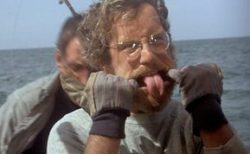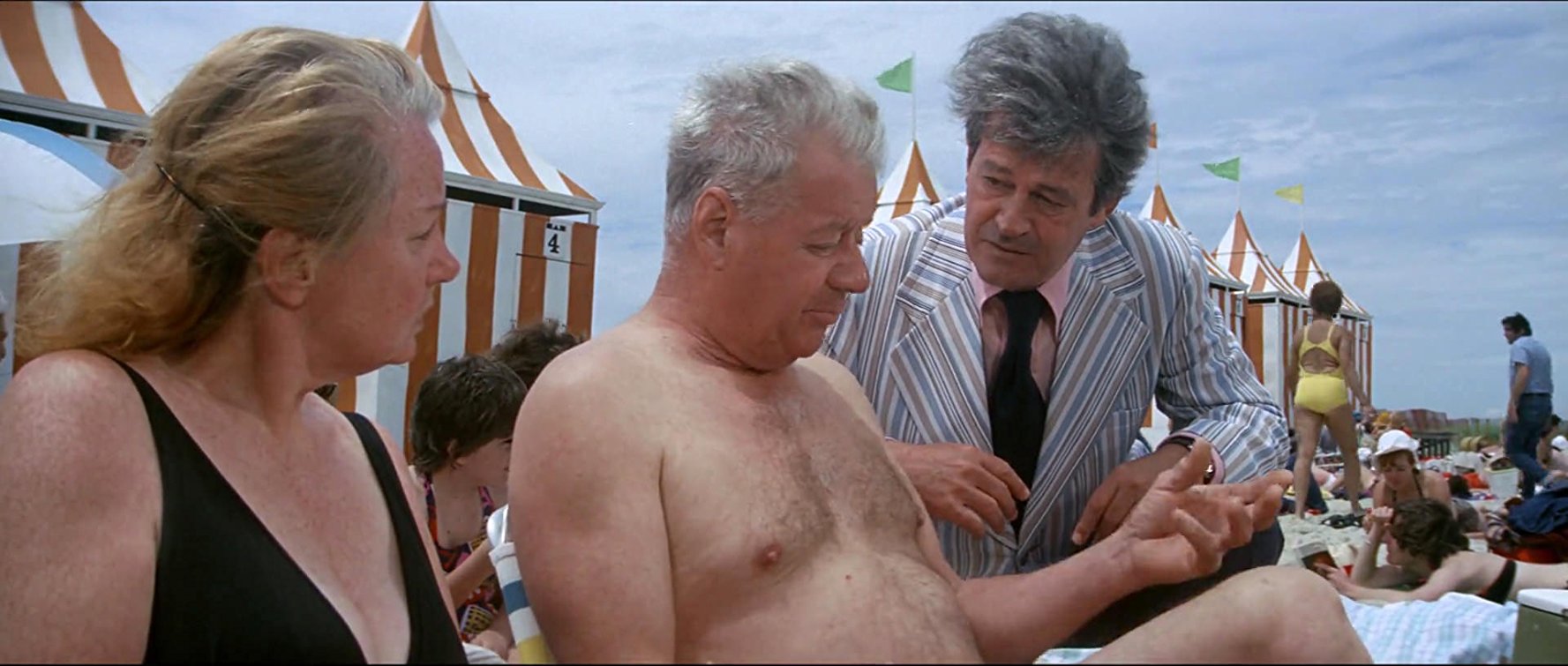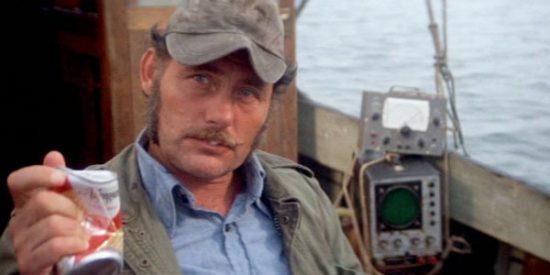Steven SpielBLOG: Jaws
Jaws was shown on ITV 8 October 1981, its UK television premiere. A Saturday. I was 9 years old. 23 million others watched it the same night. Almost half of the UK population.
The film made me jump – Ben Gardner’s head and Quint spitting blood – and terrified me. I loved it. Like thousands of others, I still can’t swim in the sea without imagining the shark’s POV of my own thrashing legs and John Williams’ score sawing them off. I read the Peter Benchley novel which was ubiquitous in all good bookshops and all the charity shops thereafter. The book has a Peyton Place soapy feel to it that the film thankfully jettisons. It was also the first time the director of the film was bigger than any of the stars. Of course, by 1981, he’d also made Close Encounters of the Third Kind and Raiders of the Lost Ark, so his reputation was going through the roof. Roy Scheider, Richard Dreyfuss and Robert Shaw were familiar but hardly household names.
Just as with Duel Spielberg had taken a short story and turned it into a monster movie, so with Jaws he took a trashy novel and created art.
The basic premise is B-movie simple. A small town is terrorized by a killer shark. The first half of the film establishes the seaside town of Amity – ‘Amity, as you know, means friendship’ – as well as Chief Brody (Scheider) and his family and the local population pitted against a series of visits by the unseen Great White. As with Duel and Sugarland Express, American society is ill-equipped to deal with the menace. Has there ever been a better portrayal of venal political nearsightedness than Major Larry Vaughn (Murray Hamilton) and his refusal – supported by local businesses – to close the beaches? The scene where he persuades an old man to take his wife and grandchildren into the water, despite their fear of the shark, is chilling in its portrayal of acquiescence. Here we have a villain who will die horribly; a bunch of children to protect and a sheriff who will rescue them in the end. If the film had been written by an algorithm.
 But Brody is the newcomer, the outsider, whose own wish to fit in renders him unfit to deal with the immediate danger. Hooper (Dreyfuss) arrives as another outsider but he is empowered with expertise and a moral compass, and vitally the wealth, to place him above such petty concerns. With Dreyfuss’ fussy, energetic performance, he almost seems to be outside of the film: a smart ass always on the verge of breaking the fourth wall.
But Brody is the newcomer, the outsider, whose own wish to fit in renders him unfit to deal with the immediate danger. Hooper (Dreyfuss) arrives as another outsider but he is empowered with expertise and a moral compass, and vitally the wealth, to place him above such petty concerns. With Dreyfuss’ fussy, energetic performance, he almost seems to be outside of the film: a smart ass always on the verge of breaking the fourth wall.
In contrast to the two outsiders, Quint (Shaw) seems to be an island unto himself. Not so much that he’s an outsider to Amity – which he is – but that Amity is beneath his regard. An authentic man’s man: he is a beer-guzzling, women-despising, arm wrestling, horny-handed, working-class hero, a salty-tongued sailor and war veteran. His masculinity – not so much toxic as psychopathic – is set against Hooper’s irony and Brody’s sun-cream. The other men become children around the bad dad – the only one not to wear glasses – while the shark circles the boat.
And what is the shark? To begin with, the shark is the camera. A POV searching for victims. The scene on the beach when the Kinter boy gets eaten – every shot suggests the question: ‘this one? or this one?’ For Slavoj Zizek, the shark is the big other, the big fear. Essentially God. You face the shark and you are liberated from all your other petty fears – bureaucracy, marriage, career, politics – all disappear when you look into those black eyes, doll’s eyes. Even Chief Brody’s fear of water – a typical New York neuroses – melts away when confronted by the one big fear.
There was really no need for a Jaws II because the second half of the film is effectively a sequel. Like Psycho, this is a movie which shifts genre halfway through. And we go from big to small – a cast of hundreds disaster movie to a three-man version of Moby Dick. Just think for a second about all the plot developments that the film throws overboard. All the characters we have developed who we never see again. Brody’s family, Major Vaughn, the local businessmen and women – all gone, without a thought. The shark and the sea operate like a psychic eraser.
Not that we can relax. Once on the open sea, the tension that mounts – never have yellow barrels been so disturbing – is relieved with the high adventure of men trying to solve problems through doing things. John Williams’ justly famous score is as marvellous at underscoring the exhilaration in these sequences as it is the danger and suspense of the shark attacks earlier on.
The ending always struck me as silly. The more we see the shark, the less believable everything is. But on re-watching it for SpielBlog, I was amazed by how the ending is set up, almost from the beginning – air canisters in a shark’s mouth are glimpsed in a photo in one of Brody’s books – and how fleetingly the terrible rubber shark is actually seen. By the point Quint is disappearing into his maw, we’re so troubled by the death of dad that I don’t notice rubbery teeth and the mechanical lifelessness of the effects.
Although Spielberg was introducing gore and sensation into family entertainment, it would have meant nothing if it wasn’t for the application of his subtler skills: how credibly he produces a portrait of family life, with the Brody children; the white picketed small town. His experience in the speed of television is transferred over to the big screen with his use of ‘oners’ – scenes filmed in a single shot, detailed below in a great YouTube video. And his willingness to use collaborators and allow them to contribute their work. Actors would improvise iconic lines -‘we’re going to need a bigger boat’ – John Milius would add the USS Indianapolis scene and Robert Shaw would rewrite the scene to perfection – Williams’ score of course and Verna Miles’ editing, which Spielberg himself credits with making the film a success.
The massive commercial success of the film – widely regarded as ushering in the age of the blockbuster – meant that Spielberg now had the open door to Hollywood, he’d been angling for since he snuck off the Universal Studios tour bus and went and hid in the back lot as a kid. Once he’d turned down the sequel – at that time sequels were considered cheap gimmicks to be avoided – what did he want to do next?
UFOs obviously.
Next up: Close Encounters of the Third Kind
You can check out my blog and follow me on Twitter.












